Lisbon is the largest city in Portugal, it is also its capital. The stunning city is charismatic and vibrant with an estimated population of 544,851. It is one of the oldest cities in the world, and this is reflected in its numerous historical buildings and authentic traditions. Delve into the long-lasting tradition of Fado music and eat some fresh sardines whilst you enjoy the sun which shines 290 days a year.
As Lisbon is the 9th-most-visited city in Southern Europe, get the most out of your upcoming trip with these 21 things to do…
MUST-DO
Sao Jorge Castle
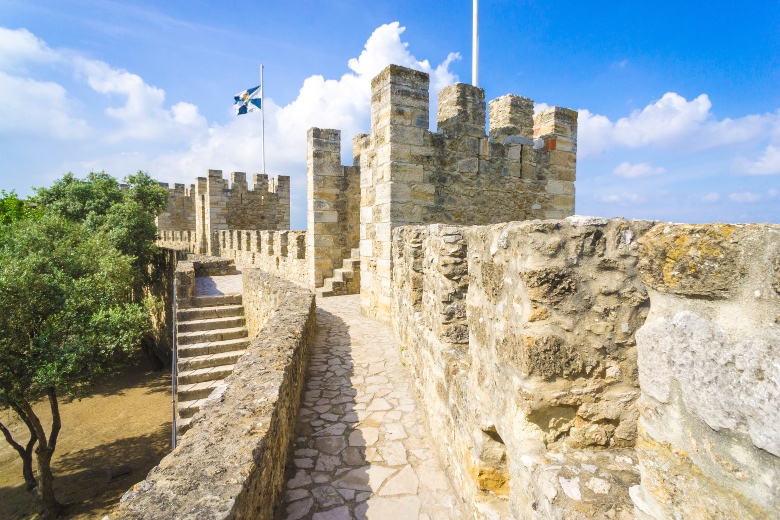
Sao Jorge Castle is a historic castle in Lisbon, it is one of the city’s most emblematic landmarks. The castle was built in the mid-11th century, during the Moorish period. It still retains all original eleven towers, as well as its grandeur. Today, it stands majestically above Lisbon and compels tourists to come and view the most stunning views of the city. Book a guided tour of the extensive castle today, stroll across the gardens and grab a snack at the Café do Castelo.
Note: There is a small museum inside the castle which provides more information about Lisboa’s History.
Wander down Alfama
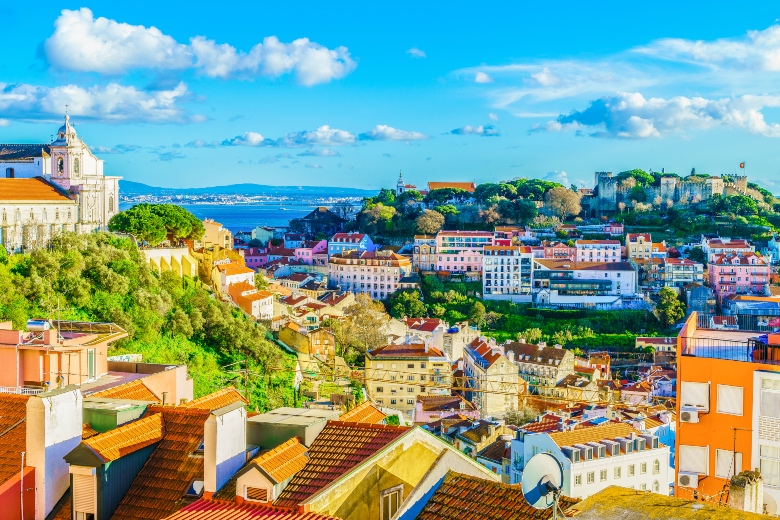
Alfama is one of Lisbon’s oldest districts. It is fittingly described as a maze of historic houses and cobbled streets. As Alfama was once known for its waters, its name is derived from the Arabic word al-hamma, which refers to baths and fountains. The peaceful district boasts labyrinth alleyways which are sure to keep you intrigued. There are colourful buildings, churches, and lots of places to eat and drink. Alfama is also the perfect spot to listen to Fado as there is usually a live band playing.
Note: You can also discover Alfama blindfolded, the Lisboa Sensorial tour is an hour-and-a-half guided tour pushing you to sense the smells, noises and flavours of Alfama.
National Tile Museum
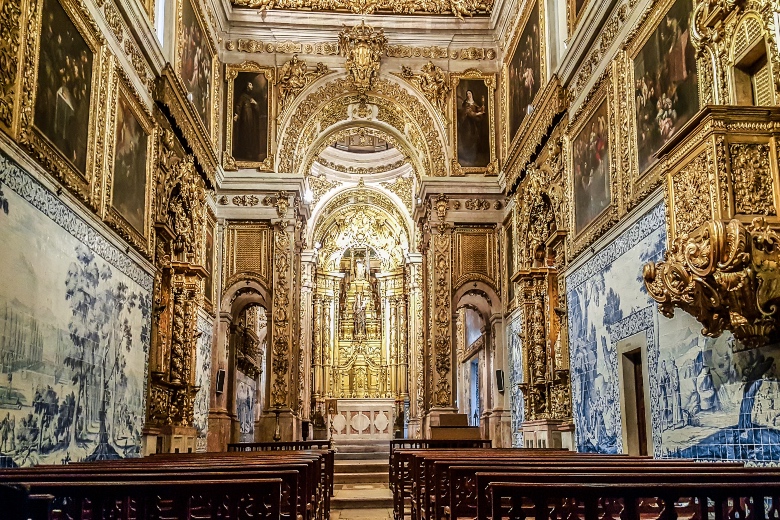
Portugal is the place to go for tiles! The National Tile Museum is dedicated to the azulejo; a form of Portuguese and Spanish-painted tin-glazed ceramic tilework. Museu Nacional do Azulejo as it is also known was established in 1965. It houses one of the largest collections of ceramics in the world. The museum is a must-see and is a great way to trace the important history of tile-making.
Book a guided tour and learn the essential characteristics of each period’s azulejo, whilst exploring reasons why the Portuguese azulejo is so unique! You will also have the chance to colour your own tiles and get a hands-on demonstration of the whole process.
Ride Tram 28
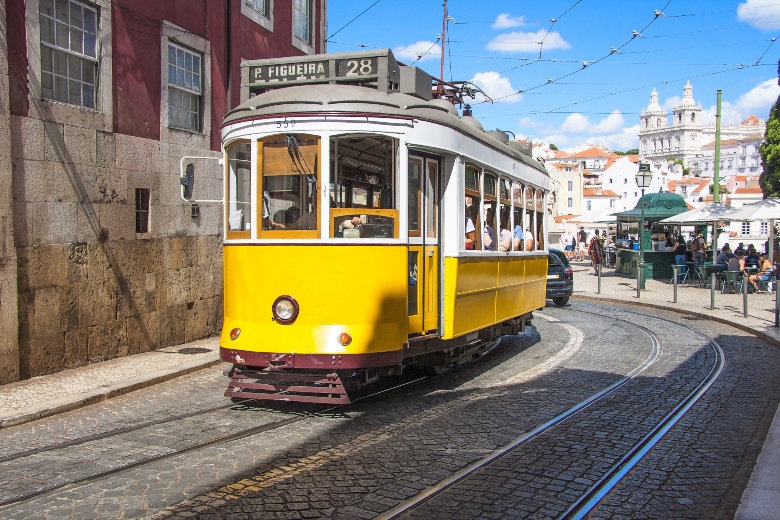
Lisbon (like Porto) is known for its historic trams. Tram 28 was developed in 1914 and is the local and affordable tram in Lisbon. It manoeuvres through Lisbon’s steep, cobbled roads and allows you to fully explore popular places such as the Almafa district. The trams run every 10 minutes during rush hour and every 15 minutes for off-peak hours. The historic trams are movie-like, they have hardwood floors (which are polished), breaks that hiss (all too loudly) and are just truly photogenic. Tram 28 provides the perfect sightseeing route through Lisbon, it passes through all of the tourist districts, so you will be sure to discover new places along the route.
Note: Trams do get full very quickly as carriages are not so big, there are usually large queues to get on at the starting point of tram 28.
Lisbon Oceanarium
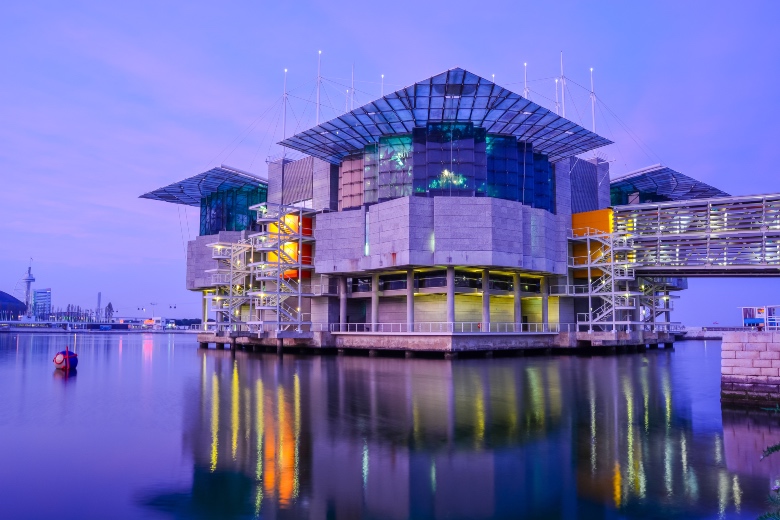
Lisbon Oceanarium is located in the Parque das Nações. It is the second-largest aquarium in Europe, containing over 450 different species of animals and more than 15,000 creatures. The building of the oceanarium stands out as it gives the illusion of “floating” in the ocean. The four large tanks in which the oceanarium is split are representative of the four major oceanic ecosystems, these are over two floors. Wander through the oceanarium and appreciate the grandeur of the ocean.
As one of Lisbon’s best family-orientated family attractions, it will be a very fun activity to do with the kids!
National Museum of Ancient Art
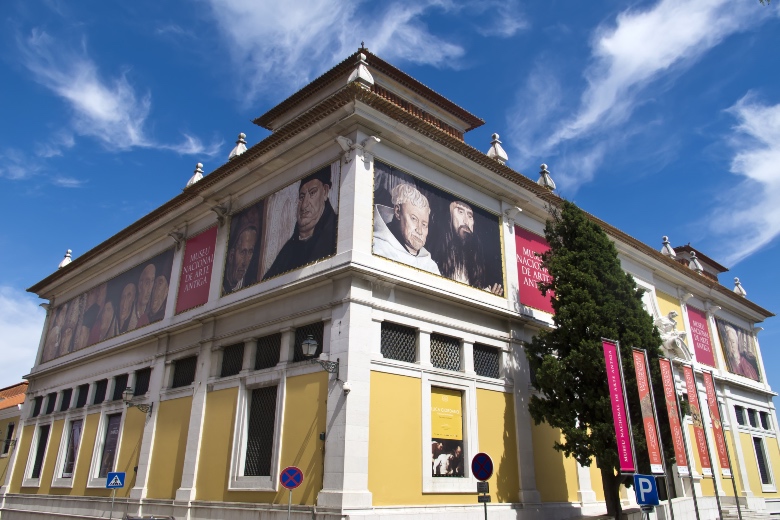
The National Museum of Ancient Art holds some of Portugal’s most influential national art collections. The Museu Nacional de Arte Antiga has over 40,000 items which are made up of sculptures, paintings, ceramics and even more. The National Museum of Ancient Art was first founded in 1884 in order to display the collections of the Portuguese Royal Family. Due to its extensive amount of items, the MNAA collection has the largest number of works classified by the State as “national treasures”.
The museum also has a restaurant which overlooks the River Tagus – this would be a lovely scene to eat some lunch at.
OTHER AMAZING THINGS TO DO
Go to the Beach at Cascais
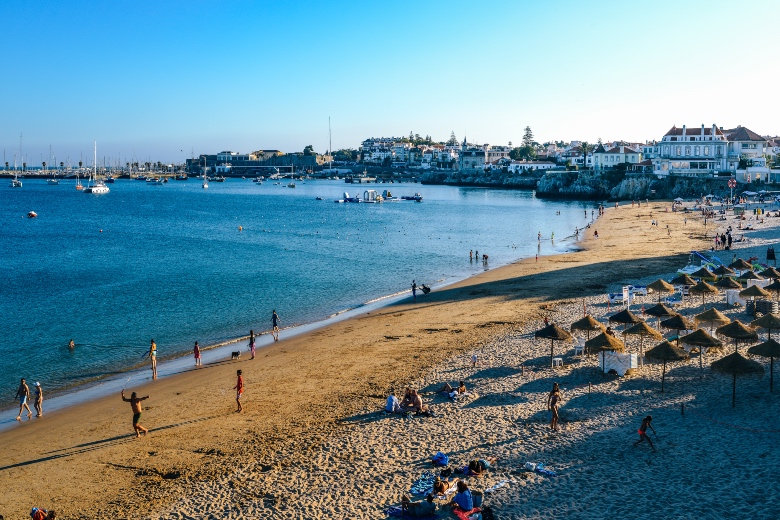
Lisbon has several beaches to choose from! The stunning beaches are Praia de Carcavelos is located in Cascais as well as Praia da Ribeira and Praia de São Pedro do Estoril (to name a few). Take part in some watersports, kick back and let the sun dance on your skin and admire the natural beauty around you.
Caixas is about 30 minutes by train or you can even go to other beaches such as Praia da Ursa, Praia de Caxias, Praia do Tamariz and much more.
A beach day is always a lovely way to unwind and stock up on some vitamin D!
Panteao Nacional
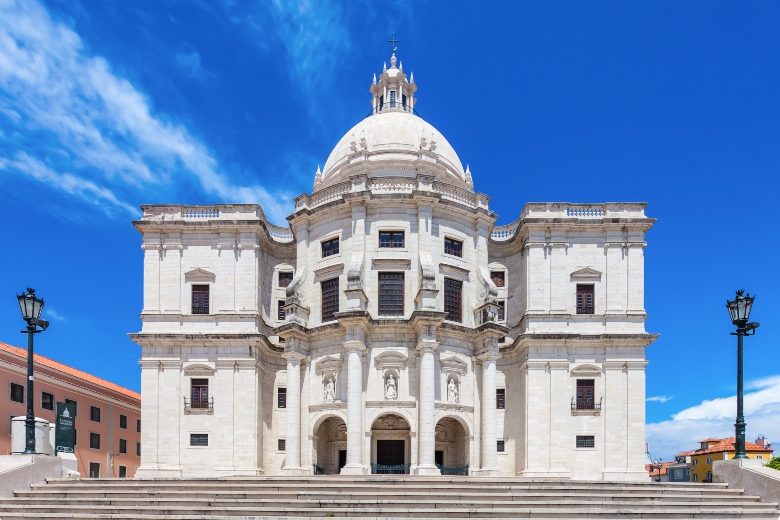
Panteao Nacional is a church located in the Alfama district of Lisbon. It is the national pantheon of Portugal and has come to be the final burial location for many important Portuguese. The construction of the church of Saint Engracia began in the second half of the 16th century and was only completed in the 20th century.
Panteao Nacional is typical of Portuguese Baroque architecture, the white dome rises high, overlooking the Tagus River. The interior is also as fascinating, featuring a stunning symmetrical design.
When you come, make sure to go to the roof where you can survey the dome and admire a 360-degree panoramic view of the Tagus River.
Mercado da Ribeira
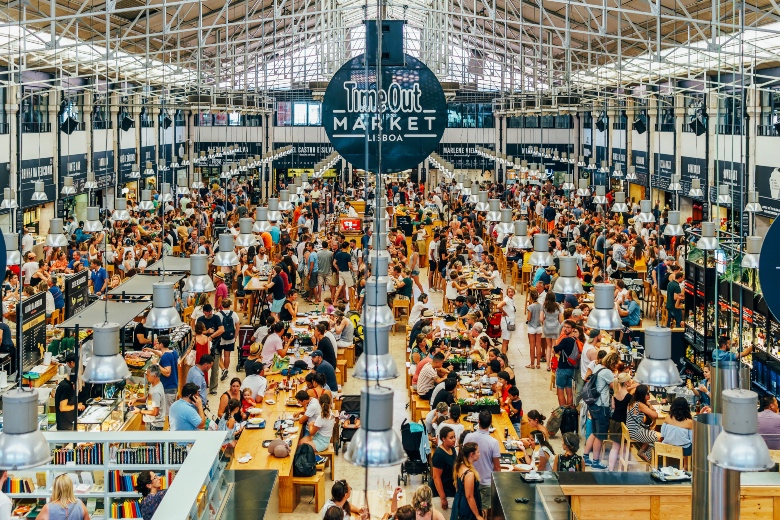
Mercado da Ribeira is Lisbon’s most famous food market, it has been the main food market since 1892. There are two parts of it to uncover. The downstairs section is like your typical traditional market and is filled with merchants selling fresh fruit and vegetables. Whilst the upstairs section features some more modern food stalls. The traditional stalls are open from 6 am to 2 pm, so get there early to get your product as fresh as possible.
Try the local specialty of custard tarts and watch your taste buds thank you in return.
Padrão dos Descobrimentos

Padrão dos Descobrimentos is a bold and must-see monument. The original Padrão dos Descobrimentos was constructed in 1949, with the aim to celebrate the age of discovery in Portugal. It commemorates the 15 and 16th-century Portuguese visionaries and explorers, and a crew of 32 limestone figures is assembled. The structure is 52 metres high and located on the northern bank of the Tagus River. Take a lift to the top of the building and experience Lisbon at a new height!
The Padrão dos Descobrimentos is beautiful and full of meaning, but it is also an amazing place to get some pictures!
Museum of Art, Architecture and Technology
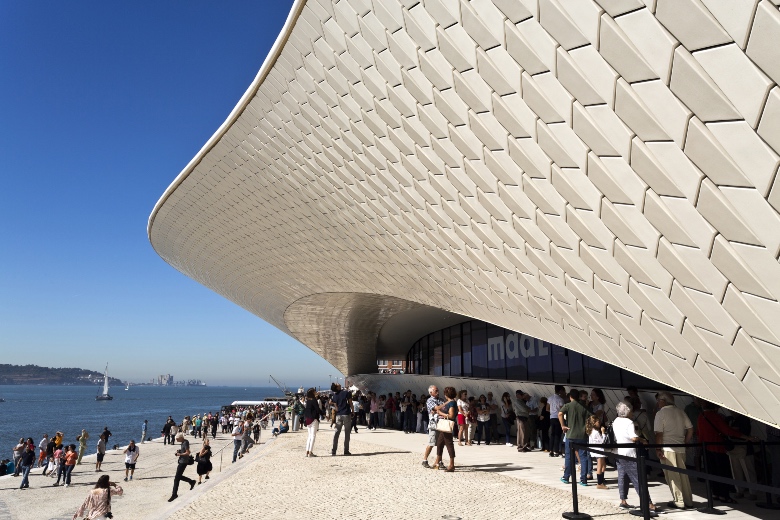
The Museum of Art, Architecture and Technology sits on the banks of the Tagus River. Launched in October 2016, the international institution explores the convergence of contemporary art, architecture and technology. The building was designed by the architect Amanda Levete, and the Tejo Power Station. The building is covered in 15,000 white, three-dimensional ceramic tiles and its location boasts of the most stunning views.
The Museum of Art, Architecture and Technology is one created for all ages and audiences, so go and have a look at the diversity that it promotes.
Arco da Rua Augusta
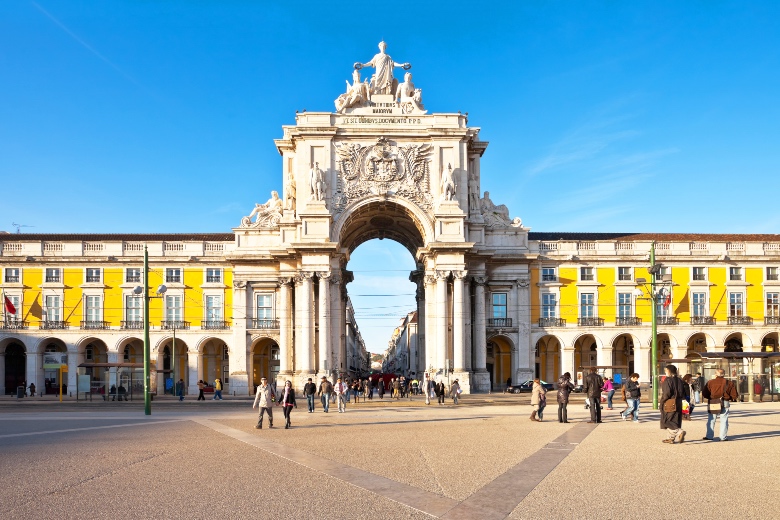
Arco da Rua Augusta is one of Lisbon’s most iconic buildings. The arch is a symbol of the rebirth of a new Lisbon after the devastation of earthquakes, fires and tsunamis in 1755. You will spot the Latin inscription “virtvtibvs maiorvm” on the arch, which translates to “The Virtues of the Greatest”. It is representative of the resilience of the Portuguese people. The sculptures at the top of the arch were completed by Anatole Camels to signify Glory crowning Genius and Valour. Not only does the arch provide a wonderful 360 view over Lisbon and the Tagus river, but you are also able to discover more of the history of this arch in the exhibition held in the Clock Room.
Climb up the Arco da Rua Augusta for unique views of the city and experience Lisbon at your feet!
Palace of the Marquises of Fronteira
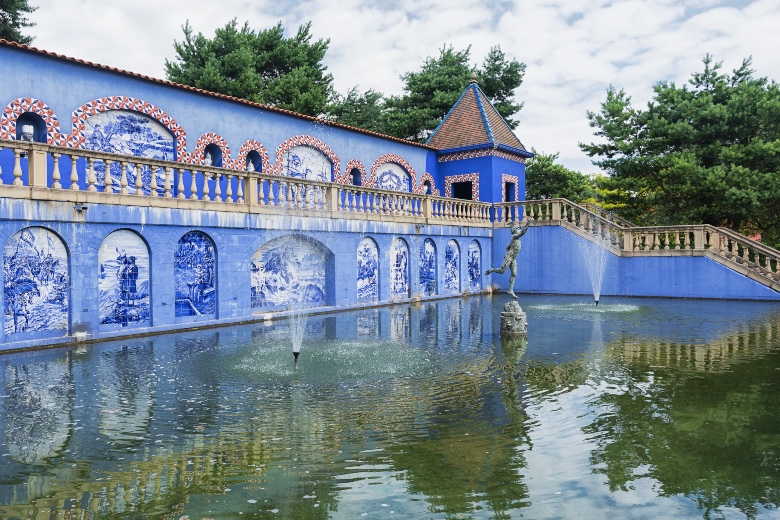
The Palace of the Marquises of Fronteira was built in 1671 as a hunting pavilion. It is situated in a quiet area, not far from Lisbon’s Monsanto Forest Park. The palace is strikingly beautiful and is famous for its stunning gardens and an extensive array of glazed tiles. The azulejos depict different themes such as battles or mythological creatures. In the gardens, you will also find that the hedges are cut to be representative of the different seasons in the year. As the palace is the current residence of the Marquis of Fronteira, only some of the rooms are open to public visits – the garden and the library.
The Palace of the Marquises of Fronteira also doubles as a wedding venue, so if you’re looking for a magical destination wedding venue, you may just be in luck!
Bairro Alto
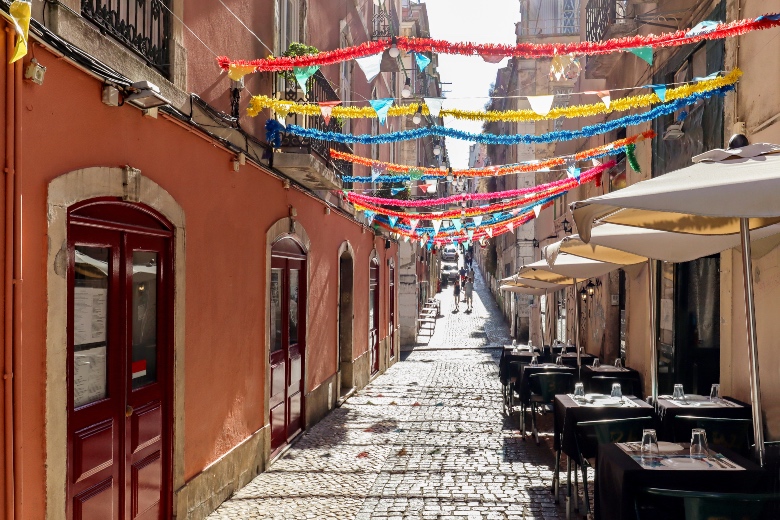
The Bairro Alto district is a must-go for it’s buzzing nightlife. It is still somewhere nice to explore during the day, as it has an abundance of restaurants and also plenty of art and history to explore. At night, Bairro Alto comes alive. The hilly streets are packed with bars, clubs and enthusiastic tourists. Enjoy a cocktail, explore Fado music holes, or dance the night away at a club – the choice is all yours!
You will certainly enjoy your time at Bairro Alto as it is one of the most lively places in Lisbon.
Igreja de Sao Domingos
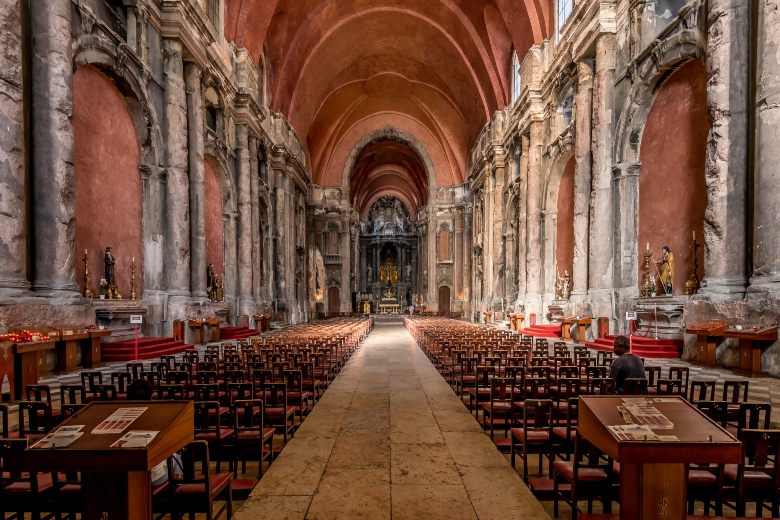
Igreja de Sao Domingos is a national monument in Lisbon. The church is extraordinary as it still stands even after going through many disasters. It was first damaged in the 1531 and 1755 earthquakes, then severely destroyed by a fire in 1959. Located in the Baixa district, It was once the biggest church in Lisbon. Although the church has since undergone restoration, there are still clear signs of the fire, these are reflected in the scorched pillars and permeating fire smell. Inside is filled with red marble columns and fire-damaged stonework and sculptures.
Note: Entry is free, so why not explore the church’s sombre atmosphere.
Feira Da Ladra
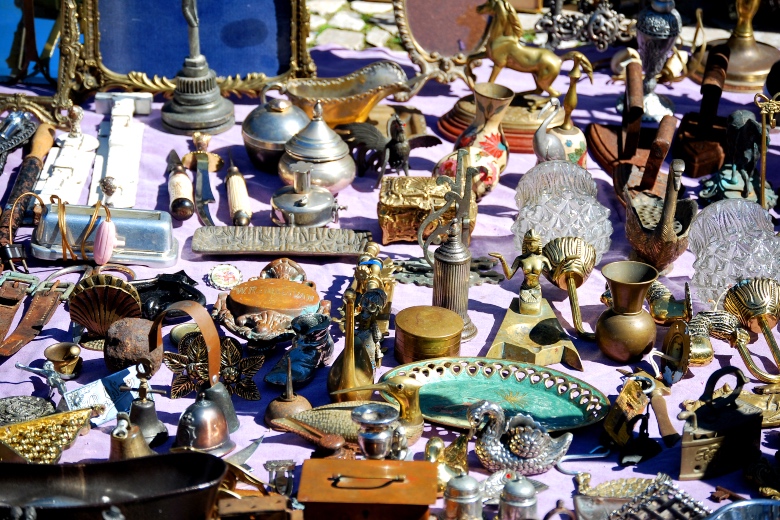
Feira Da Ladra is Lisbon’s open air flea market. It is also known as “Thieves’ Market” (perfectly legal, it is not stocked with stolen goods). It is the place to go for unusual and interesting antiques. The market dates back to 1272 and was once held in various parts of the city before permanently settling here. Its current location is Campo de Santa Clara which is a short walk uphill from Santa Apolonia Station – it is easy to get here by Metro, or Tram28. The market is held every Tuesday and Saturday, so go to Feira Da Ladra and get your haggle on!
Tip: Make sure to arrive early so that you are able to grab worthwhile things (they go really quickly)!
Monastery of Jerónimos
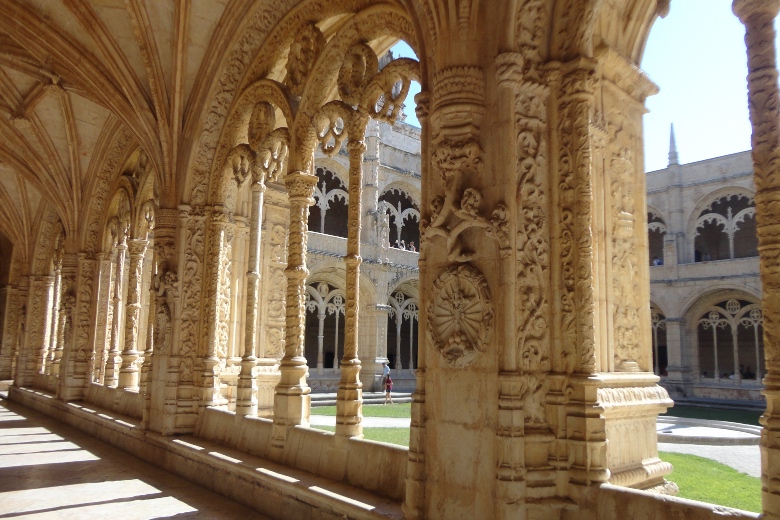
The Monastery of Jerónimos is situated in the Belem district of Western Lisbon. The monastery is the most impressive symbol of Portugal’s power and wealth during the Age of Discovery. Once populated by monks of the Order of Saint Jerome (Hieronymites), the monastery is now an exploration hub of Portuguese history and architecture. The monastery is massive and its style is predominantly Manueline (Portuguese late Gothic). There are detailed unique engravings all over the church, and the two-story cloister is a beautiful sight to see. The church also houses the tomb of Luís de Camões, a Portuguese poet. His tomb is placed facing his wife’s.
Note: Although the main chapel is free to enter, you need to pay an entrance fee for the monastery.
Bélem Tower
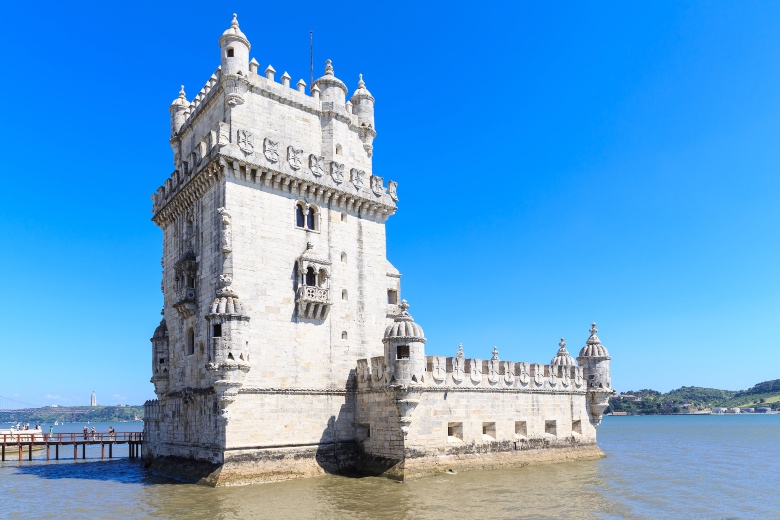
Bélem Tower lies on the banks of the Tagus River. Torre de Belém was built in the 16th century and is a landmark that you must see on your Lisbon trip! The tower was first constructed to serve as a fortress protecting the city of Lisbon. It stands 30 metres in height and is a gorgeous example of Manueline splendour. The tower has five floors which then lead to a roof terrace. You climb to the top via a narrow spiral staircase, the whole experience is guaranteed to be a lot of fun!
Note: Queues to climb to the top can be extensive, so be prepared to wait!
Livraria Bertrand bookshop
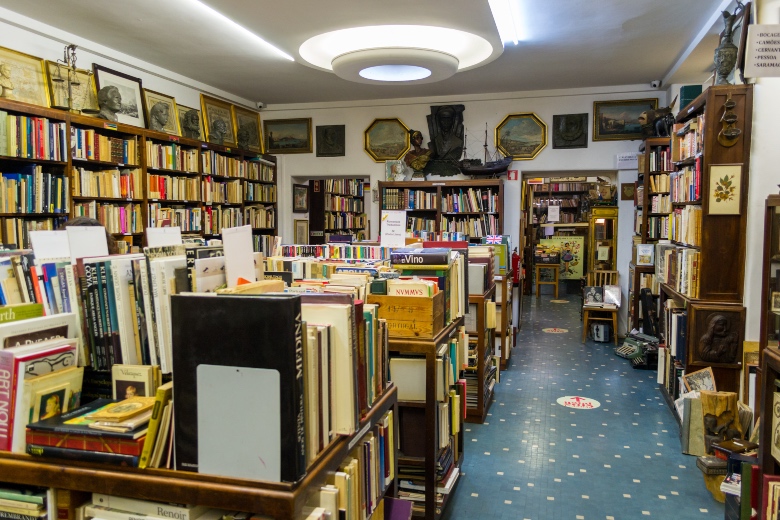
Livraria Bertrand is the world’s oldest bookshop (as confirmed by the Guinness Book of World Records since 2010). Opened in 1732, it is one of the finest book housing spaces in the world. Standing just west of the Alfama, in the Chiado district, the bookshop has become the cornerstone of the Bertrand bookstore chain. Though this is not actually the original location, as the original bookshop was destroyed in an earthquake in 1755. Come and explore the vaulted rooms and the wooden floor-to-ceiling shelves. Buy a book and you can receive a stamp stating that it was bought at the world’s oldest bookstore.
Even though most of the books are in Portuguese, there is still a small English-language section.
Convento Do Carmo
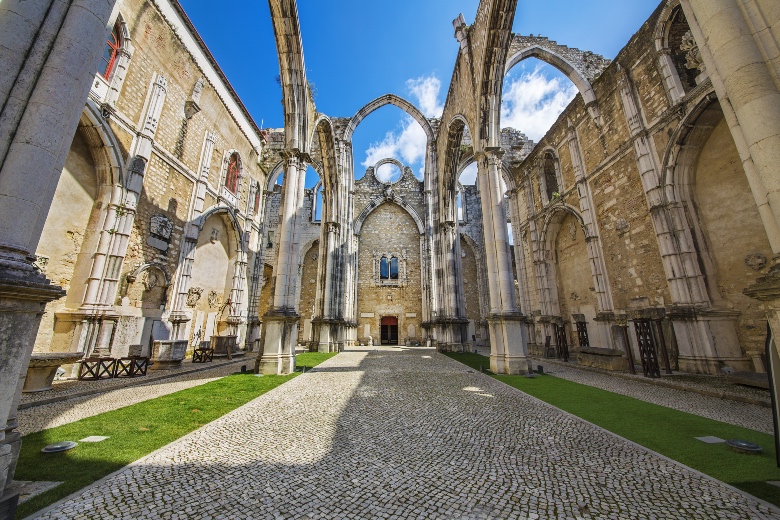
The Convent of Our Lady of Mount Carmel is a historic ruin of a former Catholic convent. The gothic church was devastated by the 1755 earthquake. At the time of the earthquake, Convento Do Carmo was the largest church in Lisbon, yet now it stands roofless (as it was never rebuilt).
You can now find the Museu Arqueológico do Carmo in the convent, which has exhibits containing Roman remains, mosaics, and even a collection of coins and treasures from Portugal’s dissolved monasteries. The archaeological museum has an engraved stone at its entrance encouraging those who entered the church that they were granted 40 days of indulgence by Pope Clement VII.
Aqueduto das Águas Livres
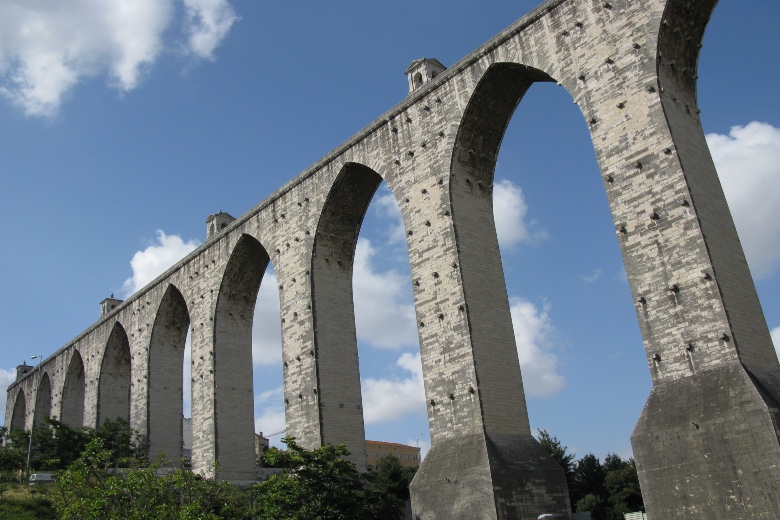
The Aqueduto das Águas Livres was constructed in the 18th century, to supply water to the city of Lisbon. It stands as a remarkable example of 18th-century Portuguese engineering and covers a total length of 14 kilometres. The structure has 21 round arches and 14 pointed ones and was still in operation until 1968. The Aqueduto das Águas Livres now houses the Water Museum in which you can admire more of the beautiful architecture. you can also walk around a huge filled water reservoir and see how the former flow of water of the aqueduct actually entered the building.
Join a walking tour and learn more about the uniqueness of the Aqueduto das Águas Livres.



